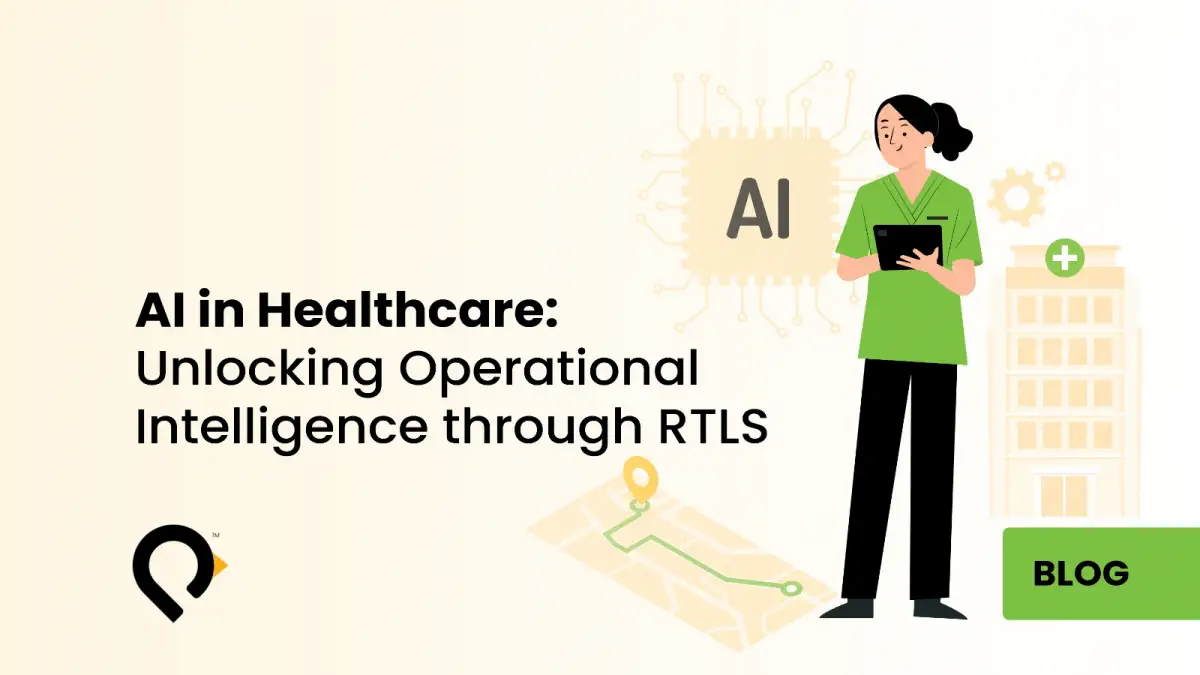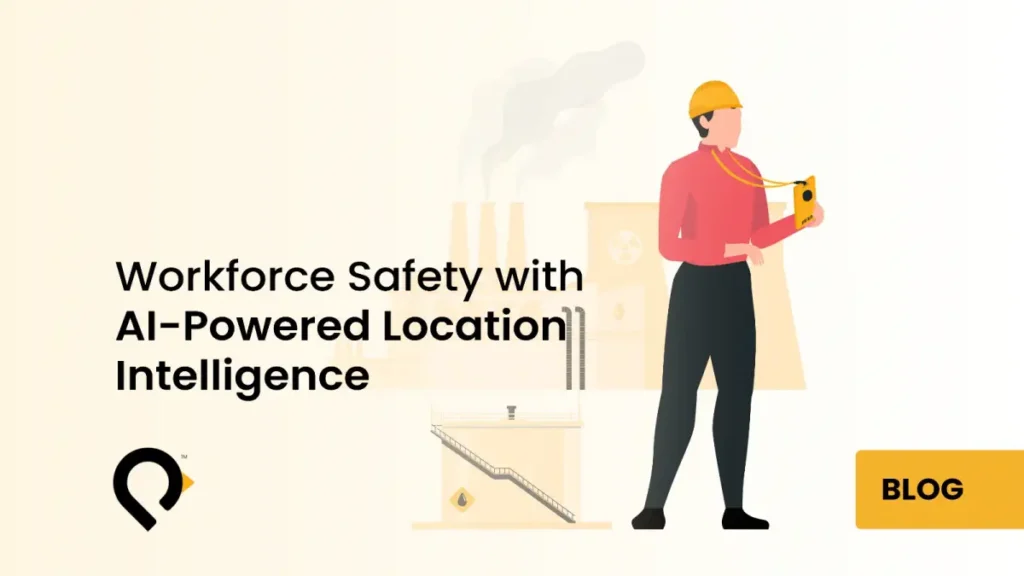
Healthcare RTLS: Unlocking Operational Intelligence with AI in Healthcare
Today, hospitals face immense pressure from multiple directions. Specifically, they must deliver high-quality care while optimizing staff performance. Additionally, they need to manage equipment costs effectively. Unfortunately, traditional reporting systems cannot keep up with these demands.
Instead, healthcare providers need real-time capabilities powered by AI in healthcare for better decision-making. This is where Healthcare RTLS systems and AI in healthcare analytics become essential. Together, they create powerful operational intelligence that transforms hospital operations through advanced artificial intelligence.
What is Operational Intelligence in Healthcare?
Operational intelligence (OI) represents a paradigm shift in hospital management powered by AI in healthcare. Specifically, it helps hospitals understand and optimize daily operations effectively. Moreover, it uses real-time data combined with AI in healthcare analytics for actionable insights.
Unlike historical reporting systems, OI powered by AI in healthcare allows leaders to respond as situations unfold. Furthermore, it connects data from multiple hospital systems seamlessly. These include location data, scheduling platforms, and electronic health records (EHR). Subsequently, AI in healthcare converts this raw data into actionable insights. As a result, hospitals can dramatically improve care delivery, resource utilization, and workflow efficiency.
Operational Intelligence in 2025
In 2025, operational intelligence combines real-time data with machine learning. Hospitals now deploy Real-Time Location Systems (RTLS). They integrate these with hospital information systems (HIS). Furthermore, they apply AI models to optimize staff movement and equipment availability.
Research shows interesting trends. About 20% of hospitals now have RTLS infrastructure. Moreover, over 60% are exploring AI integration. Health systems are evolving. They’re moving from smart infrastructure to truly intelligent operations. Consequently, they can anticipate issues and manage resources proactively.
The Role of Location in Operational Intelligence
Location data provides critical context. It helps hospitals understand their operational performance. For example, imagine a ventilator sitting idle in one ward. Meanwhile, another department desperately searches for one. This isn’t just logistics—it’s a patient safety risk. Similarly, tracking clinician movement reveals inefficiency patterns. It can also indicate fatigue or burnout.
Location-based data answers key questions:
- Where are critical assets right now?
- How long do patients wait between care stages?
- Do staff workflows align with care protocols?
This awareness enables AI to generate insights and recommend actions.
Healthcare RTLS as a Foundation for Operational Intelligence
RTLS provides essential spatial and temporal data. By itself, RTLS helps staff locate assets and monitor patient movement. However, when paired with AI and hospital systems, it becomes much more powerful. It becomes an engine for continuous improvement.
For instance, hospitals can generate real-time alerts. These trigger when equipment leaves designated areas. Additionally, predictive analytics can forecast equipment shortages. They base predictions on historical use patterns. Staff workflow data can also correlate with patient outcomes. The key point? RTLS must integrate with other systems. It cannot operate in isolation.
Integrating RTLS with Other Healthcare Systems
Integration unlocks the full power of operational intelligence. When RTLS connects with clinical and administrative systems, magic happens. For example, integrating with electronic health records ties location to patient episodes. Nurse call systems can use staff proximity to route alerts efficiently. Bed management systems can track patient movement and speed up discharges.
This data fusion creates a shift. Hospitals move from siloed reactions to coordinated, intelligent actions.
Real-World Example: AI in Healthcare for Asset Optimization
Healthcare RTLS + AI in Healthcare for IV Pump Utilization
Let’s explore a specific operational use case. We’ll examine optimizing IV pump utilization using Healthcare RTLS and AI in healthcare analytics.
- Data Collection Healthcare RTLS infrastructure captures the precise location of every IV pump throughout the hospital. Subsequently, the system stores movement patterns and dwell times in a central database (e.g., PostgreSQL or TimescaleDB) for AI in healthcare analysis.
- Data Preparation Raw location data undergoes preprocessing using Python and Pandas libraries. Additionally, records are enriched with valuable metadata for AI in healthcare processing (e.g., pump type, department assignment, patient correlation).
- Feature Engineering with AI in Healthcare Using scikit-learn and NumPy, AI in healthcare analysts extract features such as idle time, relocation frequency, and average usage per shift. Furthermore, time-series trends are generated using specialized libraries like tsfresh for AI in healthcare pattern recognition.
- AI in Healthcare Modeling and Insight Generation A machine learning model (e.g., XGBoost or LightGBM) powered by AI in healthcare is trained to classify usage patterns accurately. Specifically, it categorizes equipment as underutilized, optimally used, or over-utilized. Moreover, AI in healthcare algorithms identify anomalies—such as units with unusually high idle time—automatically flagged for review.
- Operational Dashboard Insights are presented via an intuitive dashboard built using Streamlit or Power BI with AI in healthcare analytics. Consequently, decision-makers can see which departments are hoarding equipment or which units have persistent shortages. Additionally, AI in healthcare generates alerts automatically when a pump exceeds a predefined idle threshold.
- Workflow Action The hospital’s logistics team receives automatic notifications powered by AI in healthcare to redistribute idle equipment efficiently. Furthermore, if patterns persist, AI in healthcare recommendations suggest purchasing decisions and staff training programs may be adjusted accordingly.
Additional Use Cases: Burnout Detection and Beyond
Clinician burnout detection demonstrates operational intelligence powerfully. RTLS data correlates with shift schedules, EMR interactions, and patient assignments. AI models can then estimate stress levels and movement fatigue. They can also detect cognitive overload.
Importantly, this enables proactive interventions. Hospitals can adjust assignments before burnout occurs. They can provide mental health support early. This prevents turnover and clinical errors.
Other emerging use cases include:
- Predicting emergency department bottlenecks
- Optimizing cleaning schedules based on occupancy
- Automating contact tracing during outbreaks
Conclusion: Let’s Build the Intelligent Hospital Together
Penguin Location Services leads operational intelligence in healthcare. Our RTLS platform integrates seamlessly with hospital systems. It delivers real-time visibility and AI-powered insights at scale.
Whether you’re tackling asset utilization, staff optimization, or patient safety, we can help. We’ll help you build a more intelligent, responsive healthcare facility.
Reach out today to learn how Penguin can bring operational intelligence to your hospital.
Reach out today
Get in touch to learn how Penguin can bring operational intelligence to your hospital.




